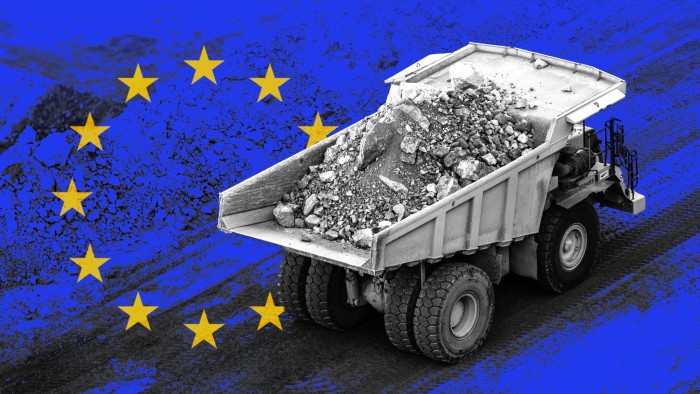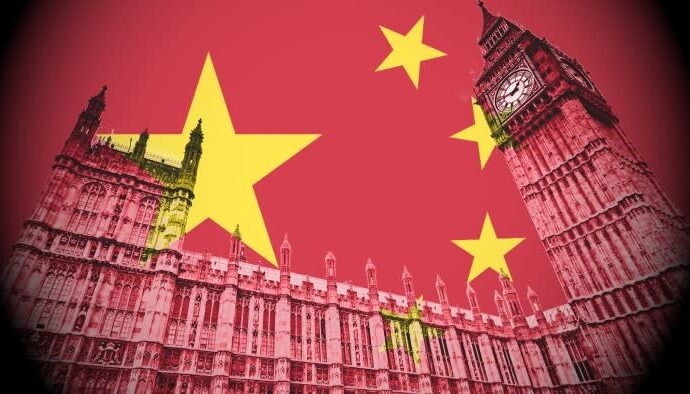
Unlock the Editor’s Digest for free
Roula Khalaf, Editor of the FT, selects her favourite stories in this weekly newsletter.
The writer is rector of the Institute for Human Sciences in Vienna
Tech wars between west and east are nothing new. During the cold war, the US and its allies competed fiercely with the Soviet Union in space exploration and weapons systems. More recently, competition between the US and China has been heating up. Ironically, this time Europe stands to be the biggest loser.
The US and its allies founded the Coordinating Committee for Multilateral Export Controls in 1949 to prevent the eastern bloc gaining access to western technology that might enhance its military and economic capability. The committee’s impact increased significantly under President Ronald Reagan with a ban on the sale of microprocessors, computers and oil extraction technology to Warsaw Pact countries. From the late 1970s, western technological advances created an unbridgeable strategic gap, helping to speed the collapse of the Soviet Union.
The last three US administrations have followed a similar strategy against China, curbing the export of high-end microchips and the machines that make them. But unlike the Soviet Union, China can fight back by imposing controls on rare earths and mineral processing technology. Last week, Beijing expanded controls to 12 of the 17 rare earth metals, claiming this was “to safeguard national security interests”.
Until the inauguration of President Donald Trump, both Europe and the US emphasised the importance of critical minerals for promoting the green energy transition. Now, another sector is expressing concern at the Chinese move; defence industries in the west are fretting. Whether in drone, tank, submarine or missile technology, China has a firm grip on the supply of many key components necessary for their production.
In the first week of the Iran-Israel conflict in June this year, approximately 800 missiles were exchanged. Each contained anywhere between two and 20 kilogrammes of rare earth elements, including two, dysprosium and terbium, now subject to Chinese export controls. Based on conservative estimates from the limited data, this means anywhere between 1.6 and 16 metric tonnes of rare earth elements were vaporised in that conflict in seven days.
Ukraine’s extraordinary recent performance in its drone war against the Russian invasion is almost entirely dependent on electronics and magnets imported from China. Ukraine is now less concerned about whether European arms deliveries will arrive on time and more worried about the flow of tech imports from China.
In the past 30 years, China has become the world leader in the processing of most of the 54 raw minerals that the US Geological Survey classifies as critical for US industry, including the defence sector. Currently the Chinese can process virtually any mineral 30 per cent more cheaply than its competitors. To compete with this, western governments would need to offer subsidies to their own industry. While China leverages its rare earth monopoly, Washington is using its influence to limit China’s access to the most powerful microprocessors (although the great majority are physically produced by TSMC in Taiwan).
China’s latest restrictions on the export of rare earths and products containing them fall into a broader framework of the US-China tech war. Both governments believe that whoever wins the race in key industries — notably AI, missile technology, quantum computing, robotics and drones — will enjoy a decisive advantage in economic and military competition over the next 30 years.
However, a group of industry and academics experts meeting at a conference on critical raw materials earlier this week in Vienna, concluded that the biggest loser in all this is neither China nor the US. It is Europe.
Trump’s America may be turning its back on solar and wind, but these renewable energy technologies are central to Europe’s 21st-century identity. European companies were pioneers in solar and wind while EVs are gradually increasing their share of the automotive industry. But now China dominates all three industries, along with lithium-ion battery production.
While the US slowly rebuilds its rare earth industry and exerts influence over producers of other critical minerals such as South America’s vast lithium stocks, Europe is barely at the races. True, Brussels has developed a critical raw materials strategy but attempts to exploit its own key mineral resources have encountered stiff political resistance from environmental groups.
Europe’s dual dependence on America’s digital services and China’s critical mineral processing industry leaves it highly vulnerable to external pressures. EU investment in key high-tech industries is risible compared with the trillions that China and the US are pouring into the sector. If Brussels is unable to mobilise member states soon, the EU will end up as a permanent supplicant to either China, the US or both.


